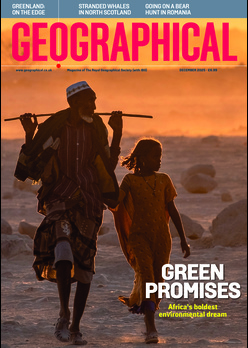
Alarm in the ‘frozen desert’ of Ladakh where a heat wave is making it too hot for aeroplanes to land or take off
By
The Tibetan Buddhist region of Ladakh, in the very far northwest of India, is a vast, high-altitude tableland. Most of the region sits at an altitude of above 3000 metres. Leh, the capital of L, Ladakh, is at 3,500m, while the highest mountains soar to more than 7,000m. Although a part of India, Ladakh is geologically, climatically, and, for the most part, culturally, a small chunk of the vast Tibetan plateau.
The climate in Ladakh is extreme. In winter, temperatures in Leh frequently fall to minus twenty Celsius, while up on the sparsely inhabited Changtang plateau winter temperatures frequently plummet down towards minus thirty or forty. As well as bitter winter cold, the region is also very dry with much of Ladakh sitting to the north of the main Himalayan range and within the Himalayan rain shadow. This means that the monsoon rains that drench the rest of India are a mere splash in Ladakh. For this reason, Ladakh (like much of the rest of the Tibetan plateau) is known as a cold desert or even as the Third Pole.
But Ladakh, like so many of the world’s mountain regions, is being strongly impacted by climate change. This week, that has been brought starkly into view in a way that also illustrates how climate change might have unexpected consequences.
Summers in Leh, which is a very popular tourist destination for both Indian and foreign visitors, can be pleasantly warm, with average maximum daytime highs of up to 25 degrees. However, temperatures over the past few days have soared to 33.5 degrees in Leh. This heatwave has led to the cancellation of numerous flights in and out of Ladakh, because the heat has made the high-altitude air of Ladakh too thin for the safe operation of aircraft. Thinner air means that aircraft engines have to work harder to generate sufficient thrust and lift to get off the ground, and to compensate for this, longer runways are required for the plane to get up enough speed to generate sufficient lift. In the case of Leh’s airport, the runway is 2.7km long, but the recent high temperatures mean a runway length of 3.5km is needed in order to ensure a safe take-off and landing. An official from Leh’s airport commented: ‘This is probably the first time that flights have been cancelled because of high temperatures’.
While it might well be the first time that flights to and from the frozen desert have been cancelled because of heat, it may not be the last. Studies have shown that as global temperatures rise there will be more and more impacts on flying. A 2020 study showed that due to rising temperatures, the maximum take-off weight of the popular Airbus A320 was reduced by 127kg each year. And a 2023 study showed that climate change related heat increases would mean that the take-off distance required for a Boeing 737-800 aircraft would increase by an average of six per cent by 2080.
Back in Ladakh though, the steadily rising temperatures haven’t just led to cancelled flights and stranded tourists. More serious is the rapid decline in glaciers in Ladakh and across the Himalaya. A 2023 study concluded that climate change-caused heat increases meant that Himalayan glaciers could lose up to 80 per cent of their volume by the end of the century and that they are already melting 65 per cent faster since 2010 than the period 2000-2009. The consequence of such dramatic glacial melt is likely to result in a decrease in freshwater running into major rivers such as the Ganges, Indus, Mekong, Yellow and Irrawaddy, which together are a major source of drinking water and irrigation for about a quarter of the world’s population.
Related articles:




